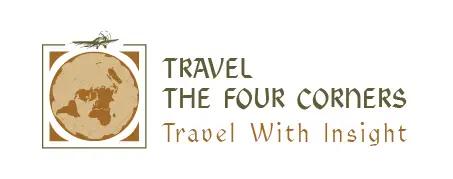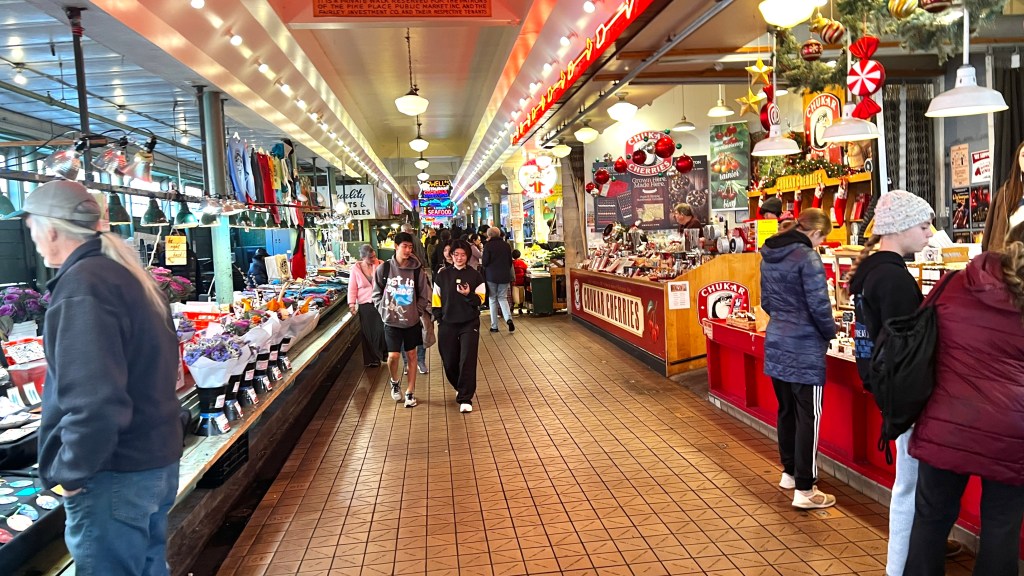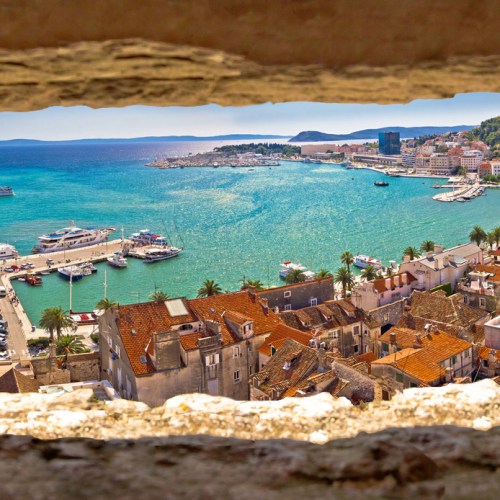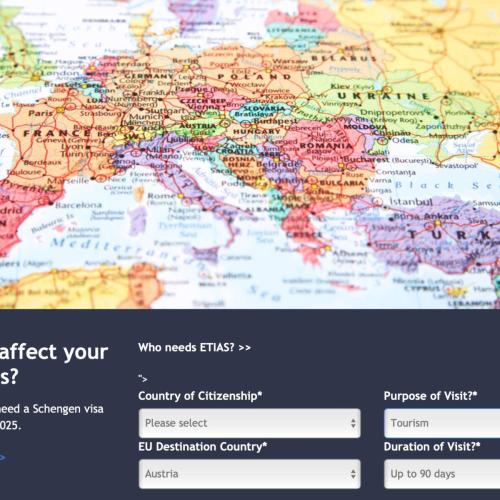
Table of Contents
Prague was the perfect spot to get together with my husband’s Australian cousins and their spouses. This beautiful city in the Czech Republic (formerly part of Czechoslovakia until its peaceful split into the Czech Republic and Slovakia in 1992, and officially renamed Czechia in 2016—a name that hasn’t quite caught on) offers something for everyone.
Along with Chris’ brother and our sister-in-law, our trans-Pacific family group of eight explored the Czech Republic’s rich European history and natural beauty for six days. Prague’s castle, cathedrals, and museums gave us impromptu history lessons. A raucous medieval dinner, a quiet dinner cruise on the Vltava River, and a day trip into the pristine Bohemian Switzerland National Park straddling Germany further colored our impressions.
Date of Visit: July 13, 2023 – July 19, 2023
Disclosure:Travelthefourcorners.com participates in the Travelpayouts.com Affiliate Program. I will earn a commission if you click through and purchase from Viator Local Tours. This commission helps me keep Travel The Four Corners’ website running.
“Good morning, Comrade.”

In the heart of Prague, where history lingers in every cobblestone and spire, the echoes of the past greet visitors in unexpected ways. My Communist-style felt cap (albeit more Maoist than Soviet), hastily packed despite more suitable sun hats in my closet, evoked an earlier era and sparked amusement for my traveling companions during our six-day cousin’s reunion in Prague.
I was henceforth “Comrade.”
Czech Mate! Our US-Aussie family never leaves home without their trademark humor.
Prague's History of Empires, Nazis and Communists
Prague’s history—deeply intertwined with its medieval past and the rise and fall of Communism—left an indelible mark on the city’s character, architecture, and me.
The weight of Prague’s past is best understood from its pivotal moments—the martyred Wenceslas I (who is the subject of a Christmas carol and lived and died between 907 and 935), the Luxembourg Dynasty of Charles IV (a man with many titles, including Holy Roman Emperor, King of Bohemia and Germany who lived from 1368-1378), then the Habsburg Dynasty that made Prague a political and cultural hub between 1526-1918. The Nazi occupation gave way to Communist rule in 1948, a time marked by political trials and repression.


From My Perspective
My tenure as a defense and foreign affairs reporter in Washington, D.C., and then a John M. Olin Fellow at Boston University during the final years of the Cold War (1947–1991) profoundly shaped my understanding of Communist Prague. Consequently, I had difficulty picturing modern, democratic Prague before my trip.
BU’s Professor Igor Lukes taught one of my most memorable classes in the early 1990s. While much of the world focused on the collapse of the Soviet bloc, Czechoslovakia was quietly dissolving into the independent states of the Czech Republic and Slovakia.
Under A Cruel Star
As my classmates and I settled into our seats one morning, an elderly guest lecturer sidled to the podium. She introduced herself as Heda Margolius Kovály. For the next hour, we were captivated by this spitfire of a woman who witnessed an unconscionable level of human cruelty under the Nazis and, later, the pro-Soviet communists.
We had read Kovály’s Under a Cruel Star: A Life in Prague 1911-1968. As a witness to both regimes, Kovály chronicled her harrowing experiences in that memoir, capturing the resilience of those who lived through Prague’s darkest decades.

A Republic is Born
Kovály’s story is worth reading before you visit the Czech Republic. Her poignant book reminds us of the sacrifices made by the Czech people before the 1989 Velvet Revolution that ushered in democracy. Unlike the uprisings in Hungary and Poland, Prague’s transformation was peaceful. It was a movement led by poets and intellectuals, culminating in Václav Havel’s presidency and the city’s embrace of the West.

Prague Today
As I discovered during my recent trip to the Czech Republic, Prague is a city that blends its layered history with vibrant modernity. Nicknamed “The City of a Hundred Spires,” it attracts millions of visitors yearly, drawn to its stunning mix of Gothic, Baroque, Renaissance, and Modernist architecture. Brutalist architecture (those concrete blocks and monolithic structures common throughout Central Europe and the former Soviet Union) is wedged between those more classical and persistent ideals of beauty, reminding us that Communism espoused a classless society far different than Prague had ever known.
Prague Castle, once the seat of the Holy Roman Empire, stands as an impressive fortress housing St. Vitus Cathedral, the Old Royal Palace, and the picturesque Golden Lane. Peaceful gardens lie between the walls. It is the largest castle in the world.
A Connection Is Made
A walk across the famous Charles Bridge, adorned with imposing 29 Baroque statues and one 18th-century bronze sculpture, offers breathtaking views of the Vltava River and the city beyond. Each statue tells a story, and for many, the most intriguing is the story of St. John of Nepomuk, a Catholic martyr whose bronze effigy gleams from centuries of hands seeking good fortune.




Bridging The Past and Present
Each of us experiences travel in personal ways.
Of the two plaques attached to St. John’s statue, the most meaningful to Chris and me wasn’t the one depicting soldiers flinging John from the bridge in 1393 (presumably at the behest of King Wenceslas IV).
It was of a knight petting a large dog.
Tragically, several hours before we boarded our flight to Prague, our beloved 10-year-old dog, Apollo, collapsed and died suddenly. Coincidentally, Apollo’s mother, a White Swiss Shepherd, was imported to the US from the Czech Republic.
In our sorrow, we connected with the Charles Bridge that day.

Something For Everyone in Prague
Prague caters to those who want to experience the pulse of city life. Affordable beer halls and lively nightlife attract young single travelers, while families can enjoy the Prague Zoo, paddleboarding on the Vltava or a whimsical Mirror Maze. Museums, historical landmarks, and hidden gems offer something for every visitor, from the curious historian to the avid sightseer. We never made it to a beer hall or paddle boarded, but Chris got crowned outside Prague Castle, and three of us, supposedly mature adults, had fun at the Mirror Maze below Petřín Tower.


Walking Through The Past
Walking the cobbled streets of Prague is like walking through time. In the height of summer, many visitors congregate around the many historical attractions.
In Old Town Square, the Astronomical Clock performs its hourly mechanical show as it has done since 1410.
The Jewish Quarter preserves centuries of history within its synagogues and the haunting Old Jewish Cemetery.
Across the river, Petřín Hill, with its Petřín Lookout Tower, built in 1891, offers panoramic views of the city, accessible by a funicular or a scenic hike.



In The Moment
Yet, the city isn’t just a relic of the past—it is a living, evolving destination. Dining experiences range from hearty Czech goulash to modern fusion cuisine and lively medieval dinners. If you aren’t into the physical exertion of stand-up paddleboarding, a relaxing river cruise on the Vltava provides a nautical perspective on Prague’s beauty.
Day trips to the Bohemian countryside reveal fairytale-like landscapes. The Czech Republic has 130 castles and many charming towns.


Accommodations in Prague range from historic hotels to modern apartments. The eight of us stayed in a spacious two-floor terraced apartment in the newer part of Central Prague (Nové Město).
For parties of six or eight, I recommend Residence Glamour Excellent. It has five bedrooms with ensuite bathrooms and two rooftop terraces accessed through oversized glass patio doors leading from the kitchen and living room. The lower terrace has outdoor patio furniture, and the top terrace is more of a viewing deck overlooking the city’s medieval rooftops. The photo at the top left was shot from the latter.


Staying slightly outside the tourist hubs offers a more authentic experience, where neighborhood cafes and local markets become part of the daily routine. The streets hold surprises, from whimsical art installations (Michal Trpák’s “Slight Uncertainty”) and buildings like the Fred and Ginger dancing house.
Prague: A City of Resilience and Transformation

Prague’s story is one of resilience, transformation, and timeless allure. Whether you come for its history, beauty, or vibrant energy, the city leaves an impression that lingers long after departure. And for every traveler, there is a unique Prague—a city experienced through a personal perspective, shaped by the past, and continuously rediscovered with every visit.
I highly recommend a trip to Prague. The activities below gave me a new perspective. Of course, I visited the fascinating Museum of Communism, but I also met modern Prague thirty years later.

Things To Do and See in Prague
One of the oldest and largest castles in the world, Prague Castle is a walled complex above the Malá Strana district that includes the Gothic-style St. Vitus Cathedral, Old Royal Palace, and Golden Lane. Today, the Czech President, Petr Pavel, works and resides within the castle compound as earlier Czech presidents and Bohemia’s kings once did. Two guards stand outside the arched gate below statues of fighting giants. The Presidential Palace adds an Austro-Hungarian neo-classical-inspired architectural influence to the Castle, while the rest of the key buildings blend Gothic, Romanesque, Renaissance, and Baroque architecture.
If you come from Nerudova Street, as we did, the steps to the main castle gate are steep. Consider taking one of the trams at the castle’s three corners to avoid cardiac arrest.
I recommend tackling the castle complex in this order:

The visitor lines grow as the day passes, so start with the Cathedral to minimize the wait.
The queue is worth it to see the magnificent stained glass windows, the High Altar, Wenceslas Chapel, and the elaborate silver Tomb of St. John of Nepomuk.



The Gothic interior and vaulted ceilings of Vladislav Hall are impressive. A replica of Charles IV’s coronation crown, the so-called Wenceslas crown, is in the Old Royal Palace. The actual Crown Jewels, including a Royal Sceptre, are stored in a secret chamber within St. Vitus Cathedral.
Here, you will see the defenestration window that helped spark the Thirty Years’ War after the anti-Habsburg opposition threw three royal governors and their scribe out of it in 1618. Fortunately, all three survived.





St. Georges Basilica: The second and oldest church on the property was built in the Romanesque style after the fire of 1142; little remains of its original design from 920 AD. Mass is held here every Saturday, and it hosts classical concerts.
Golden Lane: Rudolf II’s castle guards and their families lived in these tiny cottages built into the castle’s walls. The name “Golden Lane” originated from the period goldsmiths practiced their trade here to avoid Guild fees. Franz Kafka wrote here in House #22, rented by his sister, during WWI. In the 1950s, artists and artisans painted the houses bright colors.
In a corridor behind Golden Lane, there’s a torture chamber, a medieval armory, and a crossbow shooting range.

Four gardens are within the castle compound.
We walked through the Royal Garden of the Habsburgs, which was once a medieval vineyard and Renaissance garden.
There’s also a 20th-century Japanese and Italian-inspired Garden on the Bastion, The South Gardens, and Hartig Garden. Concerts are occasionally held on the terrace of the Old Riding School.

This iconic bridge was originally a wooden structure.
Under the reign of Charles IV, a stone bridge was completed in 1357. It connects the Old Town with the Lesser Town or district of Malá Strana beneath the castle. Thirty replica statues of saints stand like sentries along the entire span.
Most of the originals are at the National Museum in Prague. Portrait artists, souvenir vendors, and musicians ply their trades here.
The views over the Vltava River are exceptional.


Old Town Square is the heart of Prague and home to the famous Astronomical Clock (Prague Orloj). Its mechanical show, the Procession of the Twelve Apostles, takes place every hour. The beautiful 14th-century Gothic Týn Church is among the cafes and shops in the Square.




A rich Jewish history in Prague left behind beautiful synagogues, such as the ornate Spanish Synagogue (Moorish-style), the Gothic Old-New Synagogue (built in 1270) and the oldest still in use in Europe), and the tree-shaded Old Jewish Cemetery, a UNESCO World Heritage Site, with gravestones that lean into each other from age.



Explore the Baroque buildings of the Habsburg era and Rennaisance burgher houses lining Malá Strana’s streets on the Vltava River’s castle side. Known as the Lesser Town, Malá Strana’s icons stretch from the castle’s base to Petřín Hill. The John Lennon Wall, a symbol of rebellion during the Communist regime, is off-the-beaten track on a tree-lined neighborhood street. For some of Prague’s best views, take a walk or a funicular ride up Petřín Hill to climb Petřín Tower, an Eiffel Tower look-alike. Beneath the tower is a mirror maze that is fun for all ages.

Sip wine and enjoy dinner on a relaxing boat cruise along the Vltava River. Viator’s dinner cruise, with live music and dancing, offers a riverside view of Prague’s majestic Baroque buildings and takes you to the outskirts of Prague. The buffet dinner of hot and cold entrees and a dessert table was delicious.
Viator offers other cruises to sightsee and have lunch on the Vltava River.



Step into another era under a 16th-century house in Prague’s Old Town to wander the secret catacombs where alchemists labored to find the elixir of eternal youth and convert non-precious metals into gold.
The Museum of Alchemy says several passages led to Old Town Hall, the barracks, and Prague Castle where the Holy Emperor Rudolf II resided.
The lab, workshop, underground passages, and rooms were discovered in 2002 by city workers cleaning up after the Vltava River flooded the city center. It is believed the passages were once tunneled into Prague Castle.
Viator offers an Alchemy and Mysteries of Prague Castle Walking Tour.



An hour and a half’s drive from Prague, this fairytale-like park features hundreds of colossal sandstone rock towers rising sharply above pine forests straddling the Czech Republic and Germany. Although nowhere near Switzerland, the park’s name stuck because two 19th-century Swiss artists were reminded of their homeland.
The most famous sites are the arched rock called Pravčická Gate and the Bastei Bridge, which offers views of the Elbe River. Disney shot a scene at Pravčická Gate while filming C.S. Lewis’s The Chronicles of Narnia.
We signed up for a Viator Day Trip to Bohemian Switzerland National Park, so after hiking to several lookouts with stunning views of Germany, we stopped for lunch on the shaded deck of Pension Na Vyhldze.
After a hearty meal of pork goulash and chicken schnitzel with bread dumplings, washed down with pints of light and dark pivo (beer), we were ready to hike 2.2 miles, about 1 hour and 15 minutes up and down a steep woodsy ravine for a peaceful 20-minute gondola-style boat ride through the Kamenice River’s Wild Gorge.
It was the perfect hangout for Waterman of Czech folklore.

Bonus Recommendations
There’s more to see in Prague, but the highlights above gave our eight family members a taste of the city’s history, culture, and beauty! Another unique Prague experience is a classical concert or chamber music at one of the many church venues, including St. George’s Basilica at Prague Castle and the Spanish Synagogue in the Jewish Quarter. See The Prague Ticket Office’s list of “Prague´s Most Attractive Concert Venues.”
Medieval Dining
We enjoyed Viator’s 5-Course Medieval Dining Experience. It isn’t Michelin star-rated by any stretch of the imagination. Still, it was tasty, and while heavy on meat dishes, there are vegetarian and gluten-free selections for 21st-century palettes.
Our group got an eyeful as fire and belly dancers made their way around the long tables of diners in the candle-lit chamber.
Museum of Communism
I recommend a self-guided tour around the Museum of Communism to learn about Stalinist-era Czechoslovakia. You’ll get a sense of daily life under the totalitarian regime. Displays and plaques show media propaganda, censorship, economics, and education, in addition to Socialist Realism art, the People’s Militias, the army, the secret police, and courts and other institutes of repression between the Coup d’état of 1948 through the Velvet Revolution in 1989.
Tell us in the comments what you love most about Prague.

The Ultimate Prague History Quiz
1. What nickname is given to Prague because of its numerous spires?
a) The City of a Thousand Spires
b) The City of a Hundred Spires
c) The City of Gold
d) The City of History
2. What famous bridge in Prague connects the Old Town to the Lesser Town?
a) Charles Bridge
b) Prague Bridge
c) Wenceslas Bridge
d) St. Vitus Bridge
3. Who was the Czech president during the Velvet Revolution?
a) Václav Klaus
b) Václav Havel
c) Karel Schwarzenberg
d) Jan Černý
4. Which church at Prague Castle contains magnificent stained glass windows and the tomb of St. John of Nepomuk?
a) St. George’s Basilica
b) St. Vitus Cathedral
c) Old Royal Palace
d) St. Wenceslas Chapel
5. In which district of Prague can you find the famous John Lennon Wall?
a) Old Town
b) Malá Strana
c) Nové Město
d) Žižkov
6. What is the name of the channel in Prague known as “Venice of Prague”?
a) Vltava Channel
b) Čertovka Channel
c) Prague Canal
d) St. John’s Channel
7. What historical event led to the Munich Agreement, affecting Czechoslovakia in 1938?
a) World War I
b) The Cold War
c) Nazi occupation
d) The Velvet Revolution
8. Which famous Czech author lived in Golden Lane at Prague Castle during Nazi occupation?
a) Franz Kafka
b) Milan Kundera
c) Karel Čapek
d) Václav Havel
9. What is the name of the lookout tower in Prague that resembles the Eiffel Tower?
a) Petřín Tower
b) Prague Tower
c) Charles Tower
d) Wenceslas Tower
10. Which mythical creature is associated with the Czech folklore and inhabits the rivers, lakes, and ponds?
a) Vodník (Waterman)
b) Křížník (Knight)
c) Brno Dragon
d) Bohemian Wolf
11. What year did the Velvet Revolution take place, which peacefully ended Communist rule in Czechoslovakia?
a) 1985
b) 1989
c) 1991
d) 1980
12. What is the name of the fairytale-like national park located near Prague, famous for its sandstone rock towers?
a) Bohemian Switzerland National Park
b) Krkonošsko National Park
c) Šumava National Park
d) Bohemian Paradise

Answers
- b) The City of a Hundred Spires
- a) Charles Bridge
- b) Václav Havel
- b) St. Vitus Cathedral
- b) Malá Strana
- b) Čertovka Channel
- c) Nazi occupation
- a) Franz Kafka
- a) Petřín Tower
- a) Vodník (Waterman)
- b) 1989
- a) Bohemian Switzerland National Park
How well do you know Prague now? Let me know how you did!
Book Your Flights, Hotels and Activities With Our Affiliate Partners
Agoda: Discounted rates on hotels and private homes around the globe, ranging from budget options to five-star luxury stays.
Aviasales: Search flights for the best option for your specific dates. It will also let you know other dates/times when the cost may be lower again.
Booking.com: Search for Flights and Hotels.
DiscoverCars: Car rental comparison website.
GetYourGuide: Find skip-the-line tickets to attractions, walking tours by top local experts, immersive food and beverage tours, cooking and craft classes, bucket list experiences, and more.
Klook: Book hotels, cars, tours and activities, tickets to attractions, and shows at great prices.
Viator: Wine tastings, walking tours, cooking classes, catamaran rides, tickets and passes to popular landmarks, as well as travel and transportation services, such as bus tours and day trips.
Disclosure: Travelthefourcorners.com is part of the Travelpayouts.com Affiliate Program. If you click on links and make a purchase from AviaSales, Booking.com, GetYourGuide, Klook, Viator, and others, I will earn a commission. This commission helps support the operation of Travel The Four Corners’ website, and the best part is, it doesn’t cost you anything extra.














No comment yet, add your voice below!
Discover more from Travel The Four Corners
Subscribe now to keep reading and get access to the full archive.
Continue reading